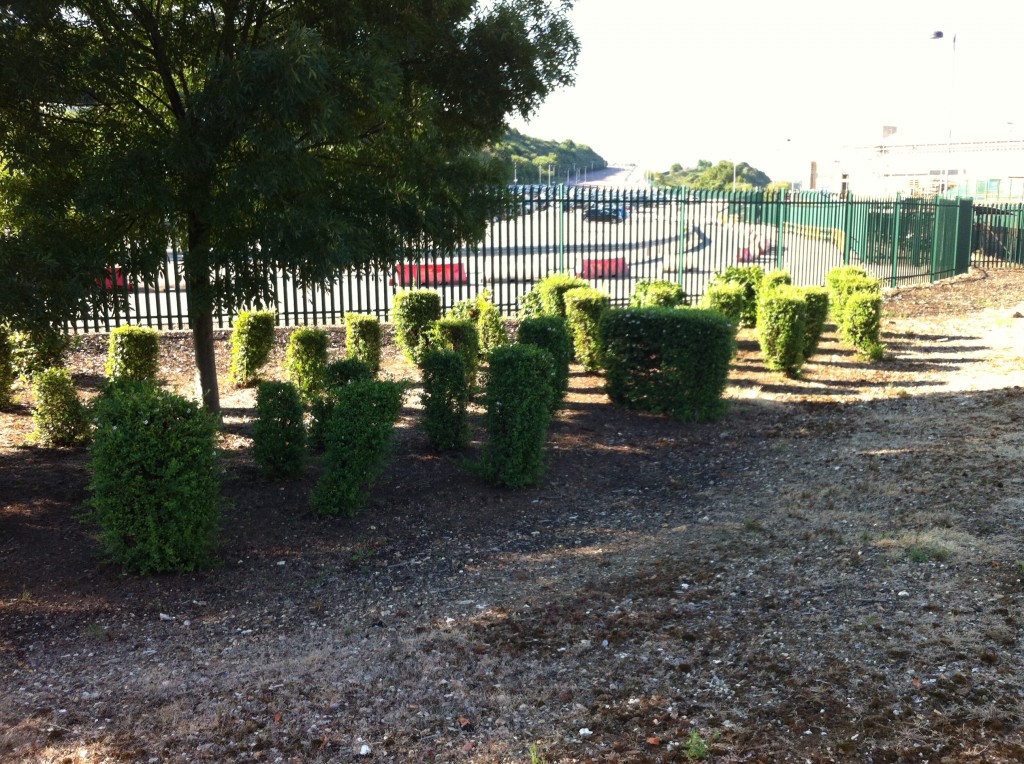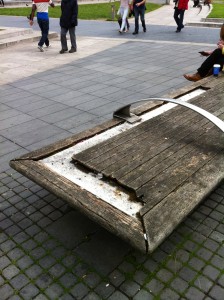I met up with some old friends a couple of weekends ago. Not just any old friends, but a 30th reunion of graduating from Manchester with our postgraduate diplomas in landscape architecture. As you can imagine, there was a lot of catching up to do. Lunch merged into dinner followed by a couple of beers as we put the world to rights. As we compared our working experiences over the last couple of decades, differences began to emerge and crystallise.
There was something of a north south divide – no real surprise there. Actually, this was more of a local authority/private practice divide than a north south, but it just so happened that most of the people working for local government were based in the north of England. Many of these people were disillusioned. My experiences of working for a local authority were exhilarating, but were thirty years ago. Not surprisingly, things have changed since then.
The overwhelming theme seemed to be one of lack of funds and skills completely driving the agenda. Even when there was money available for capital projects, the complete dearth of maintenance/management funding meant that the design of projects was severely clipped to meet the skills and funds available. One colleague told me that she had been told to do only schemes with ‘trees and grass’ as ‘trees needed no maintenance and we can cope with the mowing’. Another told me of a flagship city-centre garden restoration scheme in the north of England that received funding. He spent some time working on the restoration – it was the best project he’d had in a long time – and it was installed complete with planting by a competent contractor. When he revisited it a year or so later, he described it as ‘The great hedge-trimmer massacre’. I’m sure I don’t have to explain what this means – I witnessed a similar thing on my way to work this morning. He has just taken ‘early retirement’ at the age of 56 and is going to work in the private sector.
The final irony was that we were having the last part of the conversation in a coffee bar in Piccadilly Square – which looked pretty sad. Most of you will know this as the recipient of a highly prestigious landscape scheme a few years ago as a result of a design by Tadao Ando and EDAW. It all had a rather tired unloved look. Some of the seeds of this were undoubtedly in the design – like the timber benches (see left), and of course all city centre spaces get well used and show the signs of wear, but given that this is Manchester’s ‘mantelpiece’ I had expected a bit more. This is a sad state of affairs indeed. You might recall that this is a bit of a pet subject of mine; I wrote a previous blog about it – ‘The whole life cost of a Citroën’ and also spoke at a recent conference on the subject – SGD spring 2013 conference.
There are a number of lessons that emerge. The first is an obvious one – there seems little point in spending money on capital projects which are then not going to be maintained adequately. This is a downward spiral, because if future capital works funding is sought, but the evidence of previous schemes is unconvincing (because of poor maintenance) then bids are unlikely to be successful, or least that should be the case.
The second is a broader though parallel one on the design community. Why will practices invest time and care in projects that they know are not going to be looked after? This applies to commissioners as well – the effect is pervasive.
Finally, the whole process exerts a downward spiral on wages and profits in the landscape industry. Excessive profits at the expense of public bodies is clearly bad for all of us, as taxpayers. Nonetheless, profits are essential for re-investment in companies, for resilience, innovation, training and all the other things that make our industry great. Take this away and you end up with a sector made up of under-resourced, demotivated companies staffed by under-paid demotivated people. Hardly a good omen for the future.
The sad result of all this is that the industry is just reinforcing stereotypes and preconceptions that outsiders hold about it. Maybe some of the direct works departments of the 70’s and early 80’s were lazy, bloated and inefficient. But they were also great training grounds, fantastic centres of horticulture and beacons of local character. Has the pendulum perhaps swung too far the other way?



